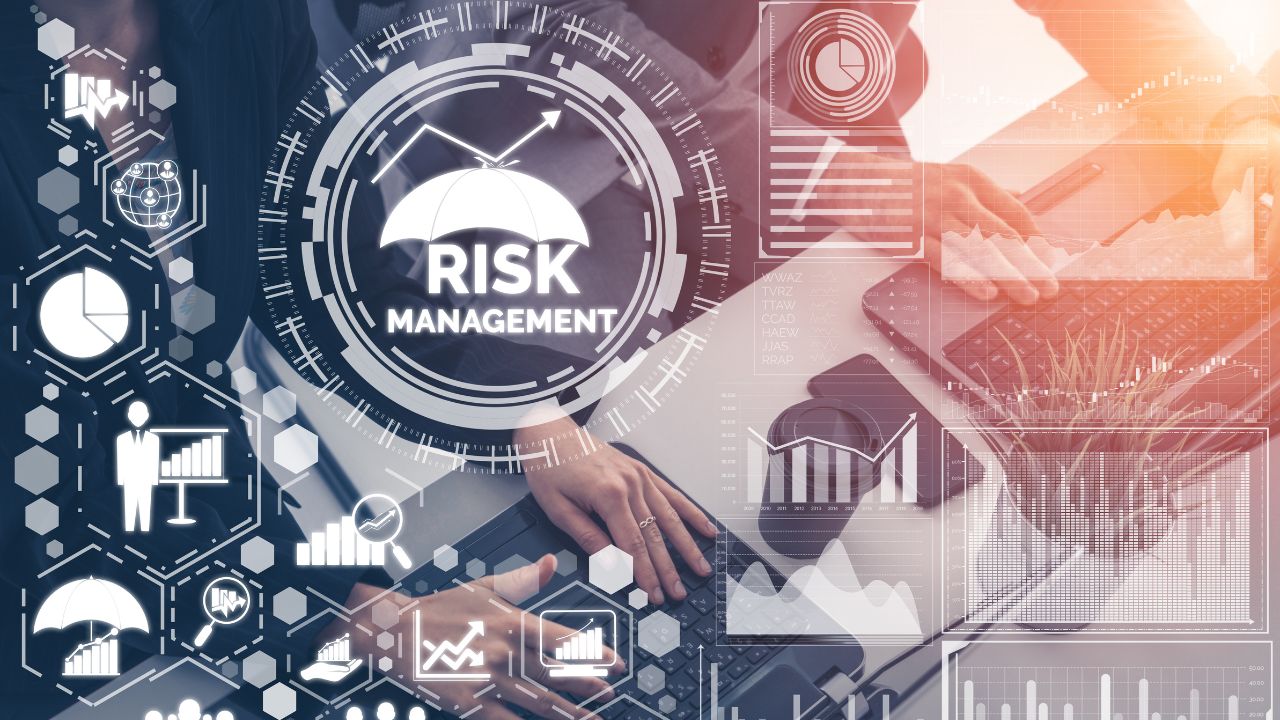 AI in risk management has come to associate with terms increased production and efficiency at a lower cost. Businesses are implementing risk management systems with AI solutions to speed up decision-making, lower credit risks. As well as offer financial services specifically catered to their users through robotics and machine learning algorithms. This article will tackle how AI in Risk Management evolves and how it can do so much for any industry.
AI in risk management has come to associate with terms increased production and efficiency at a lower cost. Businesses are implementing risk management systems with AI solutions to speed up decision-making, lower credit risks. As well as offer financial services specifically catered to their users through robotics and machine learning algorithms. This article will tackle how AI in Risk Management evolves and how it can do so much for any industry.
What is Risk Management
Risk management refers to determining, evaluating, and controlling the financial, legal, and strategic. As well as security risks to the assets and profits of an organization. These dangers or risks could result from various things, such as economic unpredictability, legal obligations, strategic management blunders, accidents, and natural calamities.
An organization must allocate resources to minimize, monitor, and regulate the impact of adverse occurrences while optimizing favorable ones to mitigate risk. How to best identify, manage, and reduce essential risks can be determined with a consistent, comprehensive, and integrated approach to risk management.
AI in Risk Management
Artificial Intelligence and Machine Learning have come to represent cost-effectively increasing productivity and efficiency in risk management. This has been made feasible by the technologies’ ability to process and analyze huge amounts of unstructured data more quickly and with much less human involvement.
Moreover, thanks to technology, banks and other financial institutions have reduced administrative, regulatory, and compliance expenses while gaining access to precise credit decision-making tools. Due to the ability of artificial intelligence (AI) solutions to provide enormous amounts of rapid, reliable data, financial institutions are now ready to build expertise around consumer insights, enabling the successful execution of plans and reducing possible losses.
Applications of AI in risk management
AI has many applications that can enhance risk mitigation and management procedures. The following are the top five use cases in use today:
Threat intelligence analysis
Threat intelligence data offers perspective on issues including attacker origins, compromise signs, behavioral trends relating to cloud account usage, and assaults against different kinds of cloud services. These Threat intelligence sources are blendable, analyzed at scale with machine learning algorithms in the cloud, and then analyzed for probability and predictability models. Predictive intelligence and faster data analysis could benefit security teams as account hijacking and ransomware attacks increase.
Security event management
AI can produce Massive amounts of logfiles and other events. Security teams must be able to identify specific signs swiftly. Also discover events occurring in cloud settings, and identify trends in circumstances as they happen. Machine learning and AI modifies massive event data processing technologies to develop more efficient intelligence identification and alerting methods.
Fraud detection
Fraud detection calls for massive inputs, different data kinds, and numerous intense types of processing for financial institutions and insurance. Analysis and text, online databases, social network analysis, anomaly detection combined with predictive models at scale may benefit from using cloud AI and machine learning engines.
Employee workforce risk reduction
In high-risk situations where accidents may prove harmful or even fatal, machine learning and artificial intelligence models can process and evaluate data about labor actions. AI systems may assess behavioral trends identified before accidents and run prediction scenarios to enhance safety protocols and avert disasters.
Data classification and monitoring
AI-based cloud analysis engines can analyze all data published and generated in a cloud environment to categorize and tag depending on established regulations and then monitor for access.
AI in Risk Management: The Benefits

Machine learning and AI have many potential advantages for use cases involving risk management and security. Several cloud-based mass computing solutions for AI risk management rely on the ability to evaluate and process massive amounts of unstructured data quickly.
Organizations can assess the following with the aid of risk management analytics that makes use of cloud-based AI:
- Uncertain circumstances or conditions;
- A condition’s or situation’s propensity to occur given the circumstances; and
- The outcomes that could result from the event or its potential impacts.
Workflows for security automation can frequently incorporate risk management solutions that leverage AI. Furthermore, they can assist security leaders in decision-making during events, preparing for business continuity, fraud investigations, and more.
Challenges of AI in risk management
The use of AI in risk management procedures and processes has two possible adverse effects, despite the advantages.
The cost comes first. Processing massive amounts of data can be expensive, especially when employing cloud-native services. It can be costly to enable specialized AI services.
Privacy comes in second. Concerns regarding data privacy with AI and machine learning are widespread in the security industry. Data protection rules, including obscurity, authentication and authorization, transport security, and encryption, may be necessary for enterprises that upload data to cloud services.
However, not all services can use the usage models and controls that organizations have set up for encryption key management and usage. This is especially true of specialized AI and machine learning services like Google Cloud AI, Amazon SageMaker, Amazon Rekognition, Azure Machine Learning, and Azure Cognitive Services.
In addition to the services, a significant regulatory and compliance concern is the placement of sensitive data in machine learning and AI activities.
Future of AI in risk management

Artificial intelligence (AI) is becoming a more significant part of how businesses assess and manage risk due to the development of new technologies.
AI gives risk managers new resources for locating, evaluating, and controlling risk. Machine learning, for instance, can be used to examine massive data sets for patterns and correlations that can suggest risk. Using this knowledge, decisions regarding how to reduce or eliminate risks can therefore be made in a more informed manner.
AI can also automate monotonous chores like tracking data changes that can point to a problem. Since they have more time, risk managers can now concentrate on more strategic duties.
AI will likely proceed to revolutionize risk management in the future. AI will grow more crucial in assisting organizations in making sense of the increasing volume and complexity of their data sets and identifying potential dangers.
FAQs
Can AI improve the accuracy and speed of risk assessment in the financial sector?
AI can improve the speed and precision of risk assessment in the financial industry. More quickly than humans, AI algorithms can handle vast data volumes and conduct complicated analyses. They can also help find patterns and links in data that manual analysis might overlook. AI can also speed up repetitive operations and lower expenses connected with risk assessment by giving real-time insights into market patterns and developments. To avoid possible biases, AI must be taught and verified on vast, varied, and representative data sets. To take into account fresh knowledge and market developments, risk assessments for AI need regular updates.
How is AI used in risk management?
Techniques utilizing artificial intelligence (AI) and machine learning (ML) are shaking up the financial services industry. The banking sector, which significantly relies on data use, is gradually adopting these tactics and has already started to take the help of its full potential.
The banking industry is utilizing AI and ML for chatbots and fraud detection in addition to automating procedures and streamlining operations for both the front and back offices to improve the entire client experience. With their sophisticated prediction methods and capacity to handle vast amounts of data, AI and ML tools are utilized more frequently in risk management to facilitate faster and more effective decision-making in credit, investments, and business operations.
How is AI used in risk management in banks?
Banks may get insights from big, complicated data sets to create more precise risk models, enhance decision-making, and detect suspicious behavior or transactions in real-time. Yet, humans need help to assess this volume of data on their own effectively. Banks are turning to technology to efficiently process massive volumes of data. And also uncover crucial insights that can improve decision-making, lower risk, and enhance the customer experience.
AI uses algorithms to analyze massive, complicated data sets at scale, find patterns, and forecast outcomes. Spotting suspicious or out-of-the-ordinary behavior that suggests the presence of fraud aids banks in risk mitigation more efficiently.
Large-scale data analysis, correlation detection, risk assessment, and decision support are possible with the help of machine learning (ML) algorithms. Deep learning is employed in the banking sector to more precisely determine the credit risk posed by loan or credit card applicants and to spot trends or anticipate events that may impact a group’s creditworthiness.
Do you think AI will take over financial risk management?
The replacement of financial risk management by artificial intelligence is imminent and is not at all remote.
AI can track various seemingly unrelated financial data, including your income, expenses, savings, and investments. In addition, it can determine past loan payments, bank and credit statements. Moreover, your regularity in making payments on time for things like rent and utilities are traceable with AI, too.
This will enable the AI to decide whether you are a hazardous borrower. However, AI-based risk management enables people with low or no credit scores to get assessments based on other payments. This is through replacing the present FICO credit score system that determines credibility.





